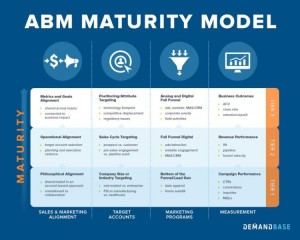— September 9, 2019

Time Leakage is hurting your agency’s profit margins. Read on to see why… and how to fix it.
What if you were wasting $ 15,000 per employee every year? You might already be doing this, thanks to a common (yet often hidden) problem: Time Leakage.
Your team’s time is your agency’s “inventory.” Yet many agencies are letting that inventory go to waste, minute by minute… and those minutes add up.
How expensive is Time Leakage? For an estimate, multiply your employee headcount by $ 15,000 a year—that’s how much.
Read on to understand what Time Leakage is, why it’s a common problem at agencies, how to identify your biggest risk areas, and how to start fixing Time Leakage at your agency.
What is Time Leakage at agencies?
Time Leakage happens when an agency’s clients receive billable time, but the client isn’t charged for the work. Individual incidents of Time Leakage are small, but they add up cumulatively—across team members and over the entire year.
Time Leakage is ultimately a significant agency profitability problem. As I noted above, it’s likely costing you $ 15,000 a year per employee… or more. Importantly, it’s unintentional leakage—versus intentionally choosing to make something “strategically free.”
Why is Time Leakage an expensive problem?
It all adds up! For example, let’s assume your agency’s Time Leakage averages 2 hours a week per employee, your target hourly rate is $ 160/hour (regardless of how you actually bill it), and team members work 47 weeks a year.
That’s ~$ 15,000 a year per employee! From that example, here’s the negative impact on an annual basis:
- With 10 employees, that’s ~$ 150K in Time Leakage each year.
- With 20 employees, that’s ~$ 300K in Time Leakage each year.
- With 50 employees, that’s ~$ 750K in Time Leakage each year.
- With 100 employees, that’s $ 1.5MM in Time Leakage each year.
Those figures are the Opportunity Cost of the billable time, rather than your lower hard costs on labor. That is, the direct costs and the exact lost-revenue will vary. But it’s a real impact—the Time Leakage is preventing you from billing others and/or delaying new billable work.
What if my agency doesn’t track time?
That doesn’t mean the problem isn’t happening! You’re still probably leaking time, even if you don’t track it. And worse, you don’t have good data to troubleshoot the problem.
Let’s look at common examples, to help you start identifying your risk areas.
What are common examples of Time Leakage?
Consider these common Time Leakage risk areas at agencies:
- Waiting to log time every few days (or weekly!) instead of daily or as you go.
- Not billing each client when you discuss multiple clients in daily, weekly, or monthly internal meetings.
- Rounding-down on tasks, instead of generally rounding-up to the next quarter-hour.
- Undercounting time when someone took more time than the estimate (which gets even worse when future estimates don’t adjust higher).
- Not seeing internal strategy meetings, project management, or “quick questions” from clients as billable.
I often get questions about how to actually bill for multi-client meetings. Let’s take a closer look at that situation.
How should we bill for meetings that touch multiple clients?
When you need to split time amongst multiple clients (for instance, in a weekly “production” meeting), here’s what I recommend:
- Which clients were helped by this meeting / conversation / work?
- Which client used the bulk of the meeting?
- Split the time among the group, with a minimum billed (e.g., 0.25h) for the “3-5 minute” ones.
That applies to any team member in “multiple client” meetings, conversations, or email sessions.
Here’s a hypothetical example. Say that three people discuss five clients during a one-hour “production” meeting. Almost half was on client A, with some for client B and a small bit on clients C, D, and E.
Each person might log 0.5 hour to client A, plus an additional 0.25 hour (apiece) to Clients B, C, D, and E. You’ve now billed 1.75 hours (x3 people) for a 1-hour meeting. And the PM(s) will bill additional time to each client for any post-meeting followups, too.
You have the option to not-bill for clients C, D, and E… but assuming they received value from the agency during the meeting, I’d bill them at least something.
Does our billing or pricing model make a difference?
There are three agency pricing models: Hourly (Time & Materials), Milestone, and Value-Based.
- Hourly Pricing: Time Leakage is a big problem in Hourly (Time & Materials) pricing, because you’re not capturing all of your billable time. This leads to less-than-accurate invoices.
- Milestone Pricing: Time Leakage is still bad under Milestone pricing, because you’re spending more time than you expected. This leads to project delays and month-end retainer crunches.
- Value-Based Pricing: Time Leakage has the lowest impact in Value-Based pricing, because you’re charging based on results. But it’s still a problem, because the leakage is taking up time you could spend elsewhere (on other clients, or on improving the agency).
Let’s talk solutions!
How to fix your likeliest Time Leakage
Try these team-oriented solutions to fix Time Leakage:
- Encourage team members to log time daily, rather than weekly.
- Be sure to bill time to every client if they receive value in a meeting, conversation, or “email replies” session.
- Remind employees to round up to the next quarter-hour on most client-billable tasks.
- Make it safe for employees to log their actual time, rather than rounding down if they needed more than the estimate (and incorporate this data when you make future sales estimates).
- Define internal strategy meetings, PM coordination, and “quick questions” from clients—anything that benefits the client—as billable.
Feel overwhelmed? Even small steps make a big difference over time—start somewhere to start seeing positive results.
Question: How do you help profits by fighting Time Leakage at your agency?
Business & Finance Articles on Business 2 Community
(57)








